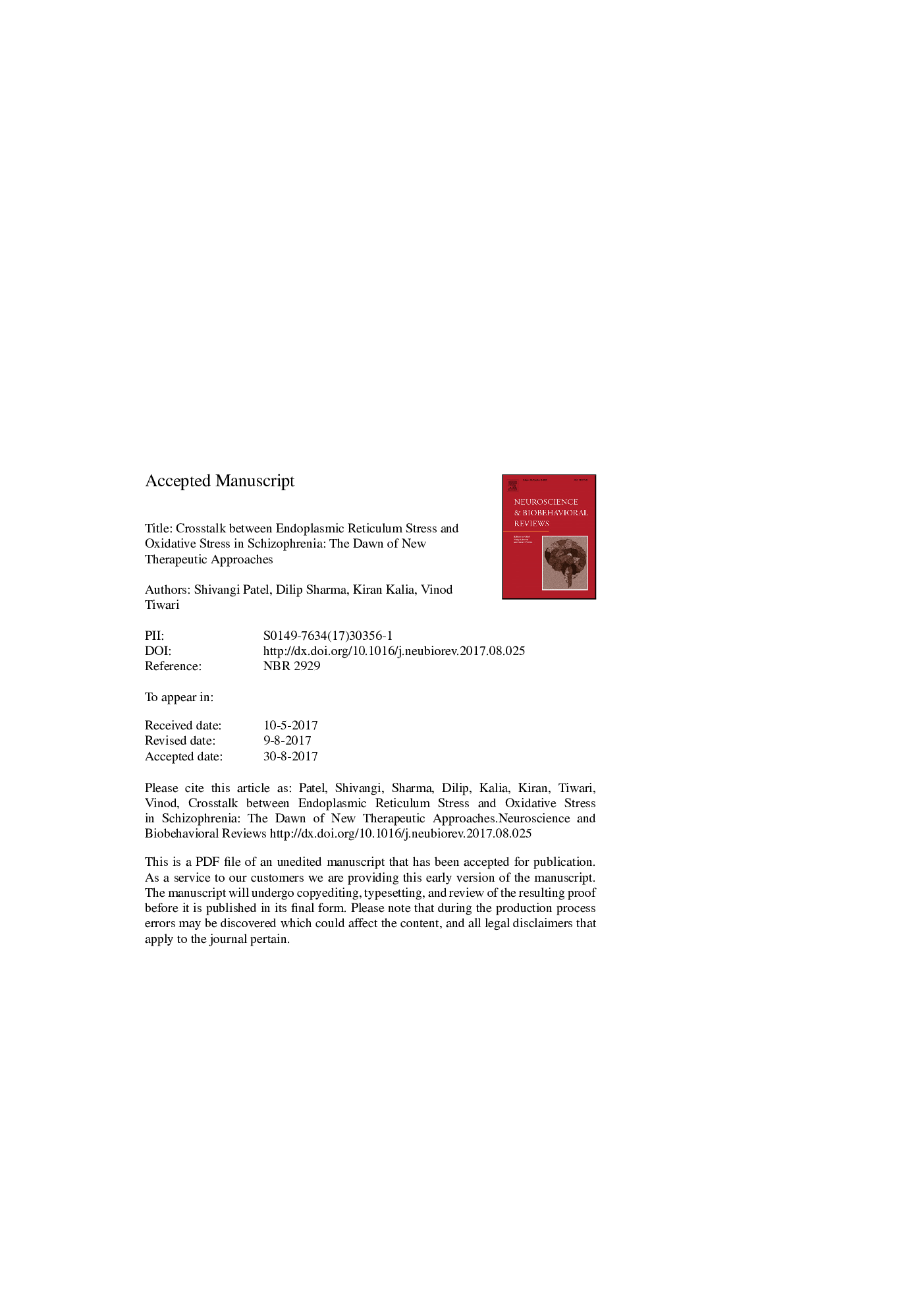| Article ID | Journal | Published Year | Pages | File Type |
|---|---|---|---|---|
| 7302443 | Neuroscience & Biobehavioral Reviews | 2017 | 70 Pages |
Abstract
Disruption of oxidant/anti-oxidant ratio as well as endoplasmic reticulum (ER) stress are thought to be involved in the pathophysiology of schizophrenia. These stresses can lead to impairments in brain functions progressively leading to neuronal inflammation followed by neuronal cell death. Moreover, the cellular stresses are interlinked leading us to the conclusion that protein misfolding, oxidative stress and apoptosis are intricately intertwined events requiring further research into their mechanistic and physiological pathways. These pathways can be targeted by using different therapeutic interventions like anti-oxidants, sigma-1 receptor agonists and gene therapy to treat the neurodegenerative course of schizophrenia. We have also put empahsis on use of synthetic and natural ER stress inhibitors like 4-phenylbutyrate or salubrinal for the treatment of this disorder. This would provide an opportunity to create new therapeutic benchmarks in the field of neuropsychiatric disorders like schizophrenia, dissociative identity disorder and obsessive compulsive disorder.
Related Topics
Life Sciences
Neuroscience
Behavioral Neuroscience
Authors
Shivangi Patel, Dilip Sharma, Kiran Kalia, Vinod Tiwari,
